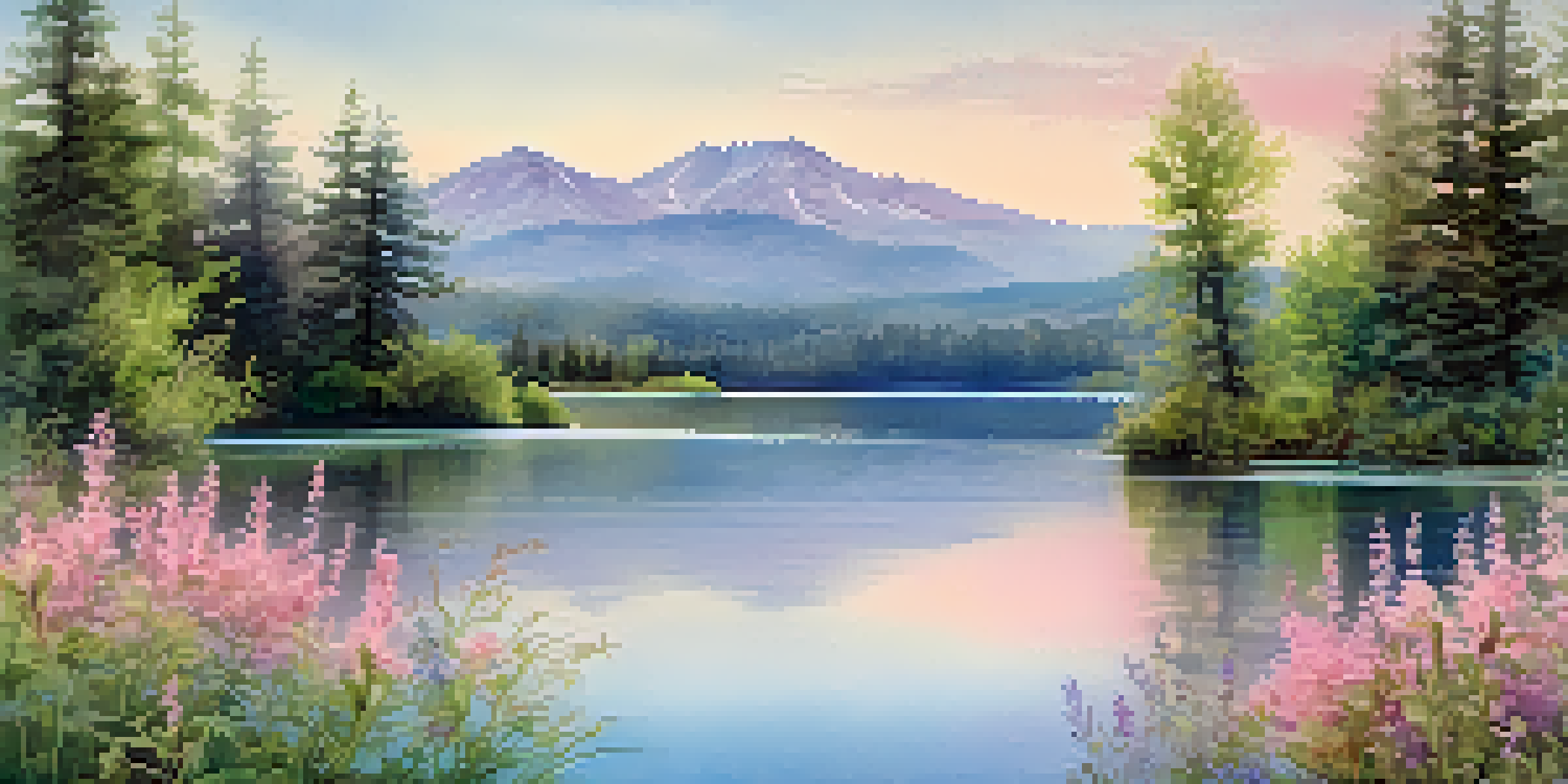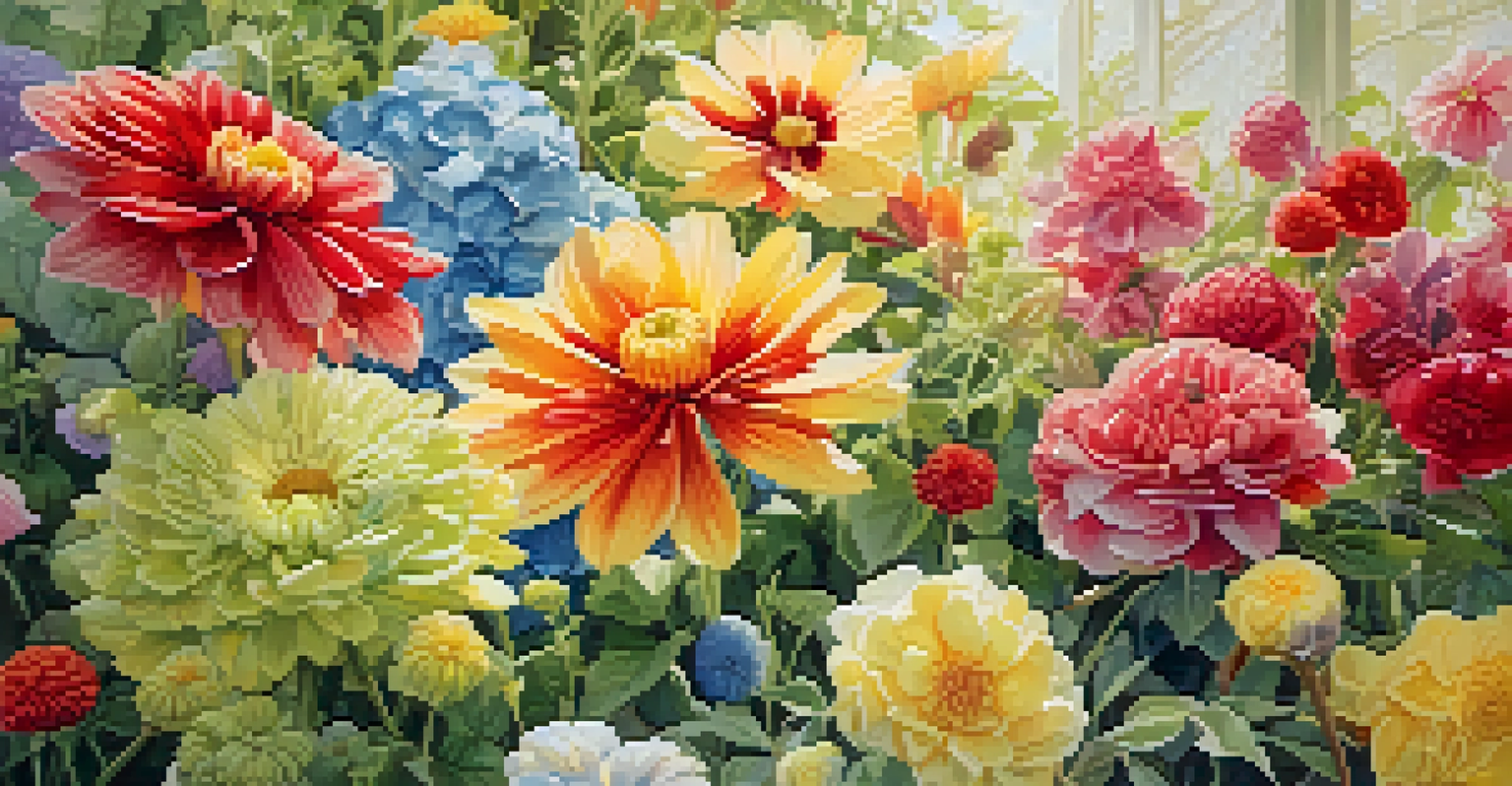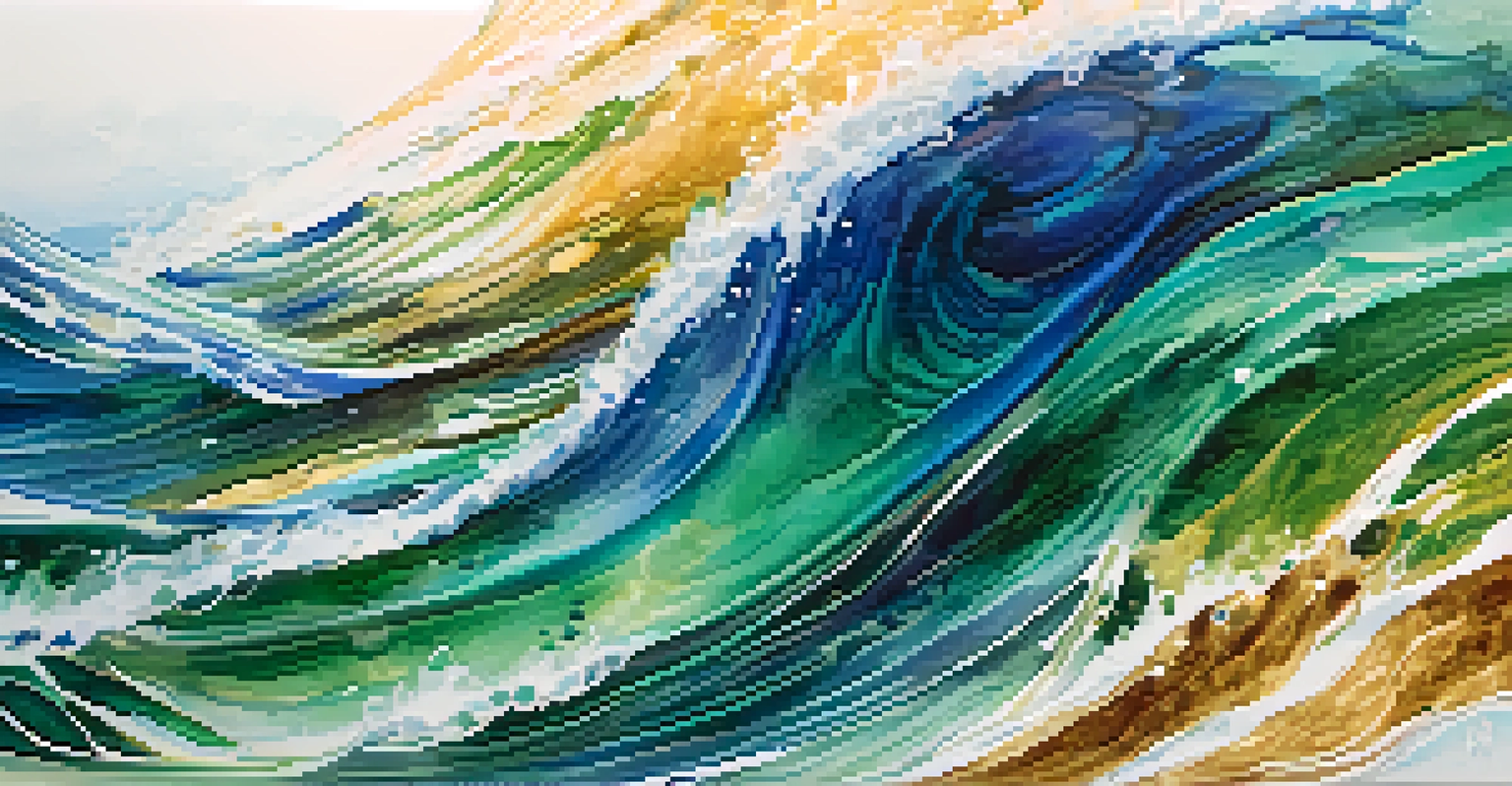Exploring Watercolor Techniques: Tips for Beginners and Pros

Understanding the Basics of Watercolor Painting
Watercolor painting is a beautiful and versatile medium that can produce stunning results. It involves using water-soluble pigments to create artwork, which means the paint can be easily manipulated with water. Beginners often find it refreshing to work with watercolors because of their fluidity and the way they can blend seamlessly.
Watercolor painting is a way of seeing the world, and it transforms the ordinary into the extraordinary.
One of the first steps in watercolor painting is to familiarize yourself with the materials. You'll need quality watercolor paints, brushes, and paper specifically designed for this medium. The right tools can make a significant difference in your overall experience and the final outcome of your artwork.
Related Resource
As you start, try to embrace the unpredictability of watercolors. Each stroke can yield different results, depending on the amount of water used and the type of paper. This exploration is part of what makes watercolor painting so enjoyable!
Essential Tools and Materials for Watercolor Artists
Your success in watercolor painting largely hinges on the tools you choose. High-quality watercolor paints, whether in tubes or pans, will give you the vibrancy and depth you desire. Additionally, investing in a good set of brushes can enhance your painting experience, allowing you to create fine details or broad washes with ease.

Don’t forget about the paper! Watercolor paper is thicker than regular paper and comes in various textures, such as hot-pressed, cold-pressed, and rough. Each texture affects how water and pigment interact, so experimenting with different types can help you find your preferred style.
Essential Tools for Watercolor Artists
Quality paints, brushes, and specialized paper are crucial for achieving vibrant and successful watercolor paintings.
Lastly, consider having a palette for mixing colors and a spray bottle to keep your paints moist. These small additions can greatly improve your workflow and allow for more creative freedom as you paint.
Mastering the Wet-on-Wet Technique
The wet-on-wet technique is one of the most popular methods in watercolor painting, and for good reason. In this technique, wet paint is applied to a wet surface, allowing colors to blend smoothly and create soft edges. This is perfect for backgrounds and dreamy landscapes, giving your artwork a sense of depth and fluidity.
Every artist dips his brush in his own soul, and paints his own nature into his pictures.
To try this technique, start by wetting your paper with clean water using a brush or a spray bottle. Then, apply your watercolor paints while the surface is still wet. Watch as the colors swirl and mix, creating beautiful, unpredictable patterns that are unique to each painting.
Related Resource
Remember, practice makes perfect! Don’t be afraid to experiment with different colors and amounts of water to see how they interact. The more you practice, the more comfortable you’ll become with this technique and its endless possibilities.
Exploring the Wet-on-Dry Technique
In contrast to wet-on-wet, the wet-on-dry technique involves applying wet paint onto dry paper. This method gives you more control over the paint, allowing for crisp edges and defined shapes. It’s ideal for creating detailed subjects like flowers or intricate patterns.
To use this technique, simply make sure your paper is completely dry before applying your paint. You can layer colors to build intensity or create shadows, which adds depth to your artwork. This method is a great way to focus on precision and detail.
Mastering Painting Techniques
Experimenting with techniques like wet-on-wet and wet-on-dry can enhance your control and creativity in watercolor art.
As you practice wet-on-dry, you’ll discover how to manipulate paint to achieve various effects. It’s a wonderful complement to wet-on-wet and can help balance your artistic repertoire.
Color Mixing Tips for Vibrant Watercolors
Color mixing is a crucial skill for watercolor artists, and understanding the color wheel can be immensely helpful. Primary colors—red, blue, and yellow—can be mixed to create secondary colors like green, orange, and purple. Learning these relationships allows you to create a broader palette without relying on pre-mixed colors.
When mixing colors, start with a small amount of paint and gradually add more until you achieve the desired hue. Remember, watercolors can look different once they dry, so it’s best to test your mixtures on a scrap piece of paper first.
Related Resource
Don’t shy away from experimenting with complementary colors, too! Mixing colors opposite each other on the color wheel can create muted tones that can add depth and dimension to your artwork.
Techniques for Creating Texture in Watercolor
Texture can elevate your watercolor paintings, adding interest and dimension. There are numerous ways to create texture, such as using salt, sponges, or even plastic wrap. Each method produces unique effects that can transform your artwork from simple to extraordinary.
For instance, sprinkling salt onto wet paint can create a starry effect as it absorbs the pigment. Alternatively, using a sponge to dab paint can yield a lovely, soft texture that resembles foliage or clouds. These unconventional tools can be just as effective as traditional brushes.
Creating Texture in Watercolors
Using unconventional methods like salt and sponges can add unique textures that elevate your watercolor paintings.
As you experiment with different texture techniques, don’t forget to embrace mistakes. Sometimes, unexpected results can lead to delightful surprises in your artwork!
Final Touches: Layering and Finishing Your Artwork
Once you’ve completed the main elements of your painting, it’s time to focus on layering and final touches. Layering involves building up colors gradually to create depth and richness. This technique is important, especially for more complex pieces where shadows and highlights are crucial.
Take your time to assess your artwork as you layer. Adding more paint gradually allows you to have better control over the final outcome. Remember, watercolor can dry lighter than it appears when wet, so trust the process and don’t rush.

Finally, consider how to present your painting. Whether framing it or scanning it for digital use, these finishing touches can enhance the beauty of your work and allow you to share your creations with others.